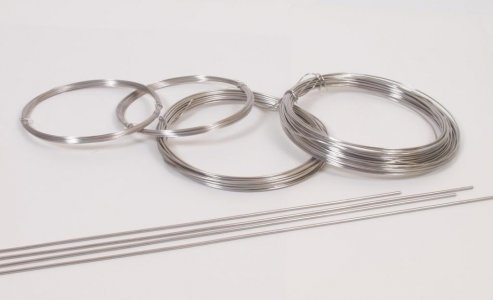Wire for thermocouples

Thermocouple (thermocouple temperature transmitter) - thermocouple used in measuring and transducer devices, as well as in control and automation systems of heating, ventilation and air conditioning.
Advantages of thermocouples
- Large temperature measuring range
- High temperature measurement up to 1800 - 2200°C
- Measurement of low temperatures from -50°C
Disadvantages
- Accuracy over 1°C is difficult to achieve, resistance thermometers or thermistors must be used.
- Readings are affected by free end temperatures, for which corrections must be made.
- Error caused by changes in cold junction temperature
- Peltier effect (during readings, it is necessary to eliminate the current flowing through the thermocouple, because this current cools the hot junction and warms the cold junction)
Types of thermocouples
The requirements for thermocouples are defined in GOST 6616-94 .
- platinum-rhodium thermocouples - TPP13 - Type R; TPP10 - Type S
- platinum-nickel platinum-nickel thermocouples - TPR - Type B
- iron-constantan (iron-copper-nickel) TZHK - Type J
- copper-constantan (copper-copper-nickel) TMKn - Type T
- Nicrosil-nisil (nickel-chromium-nickel-silicon) ТНН - Type N
- chromel-alumel - TXA - Type K
- chromel-constantane ТХКн - Type E
- chromel-copper - TXK - Type L
- Copper-copper - TMK - Type M
- Silch-silicon - TCC - Type I
- Tungsten-Tungsten-TVR - Type A-1, A-2, A-3
Comparison of thermocouples
The table below describes the properties of several different types of thermocouples. Within the accuracy columns, T represents the temperature of the hot junction, in degrees Celsius. For example, a thermocouple with an accuracy of B±0.0025G-T would have an accuracy of B±2.5°C to 1000°C.
| IEC thermocouple type | Temperature range °C (continuous) | Temperature range °C (short-term) | Accuracy class 1 (°C) | Accuracy class 2 (°C) |
|---|---|---|---|---|
| K (alumel-chromel) | 0 to +1100 | -180 to +1300 | ±1.5 -40 °C to 375 °C ±0.004xT 375 °C to 1000 °C | ±2.5 -40 °C to 333 °C ±0.0075xT from 333 °C to 1200 °C |
| J | 0 to +700 °C | -180 to +800 °C | ±1.5 -40 °C to 375 °C ±0.004xT 375 °C to 750 °C | ±2.5 -40 °C to 333 °C ±0.0075xT from 333 °C to 750 °C |
| N | 0 to +1100 °C | -270 to +1300 | ±1.5 -40 °C to 375 °C ±0.004xT 375 °C to 1000 °C | ±2.5 -40 °C to 333 °C ±0.0075xT from 333 °C to 1200 °C |
| R | 0 to +1600 °C | -50 to +1700 | ±1.0 0 °C to 1100 °C ±[1 + 0.003x (T - 1100)] 1100 °C to 1600 °C | ±1.5 0 °C to 600 °C ±0.0025xT 600 °C to 1600 °C |
| S | 0 to 1600 | -50 to +1750 | ±1.0 0 °C to 1100 °C ±[1 + 0.003x (T - 1100)] 1100 °C to 1600 °C | ±1.5 0 °C to 600 °C ±0.0025xT 600 °C to 1600 °C |
| B | +200 °C to +1700 °C | 0 to +1820 | ±0.0025xT from 600 °C to 1700 °C | |
| T | -185 to +300 | -250 to +400 | ±0.5 from -40 °C to 125 °C} ±0.004xT from 125 °C to 350 °C | ±1.0 from -40 °C to 133 °C}} ±0.0075xT from 133 °C to 350 °C} |
| E | 0 to +800 | -40 °C to +900 °C | ±1.5 -40 °C to 375 °C ±0.004xT 375 °C to 800 °C | ±2.5 -40 °C to 333 °C ±0.0075xT from 333 °C to 900 °C |
Wire and strip for thermocouples
 Characteristics of the alloy Alumel HMzAK2-2-1
Characteristics of the alloy Alumel HMzAK2-2-1 Characteristics of the alloy Chromel HC9,5
Characteristics of the alloy Chromel HC9,5 Characteristics of the Kopel alloy МНМц43-0,5
Characteristics of the Kopel alloy МНМц43-0,5 Characteristics of the alloy Constantan MNMts43-0,5
Characteristics of the alloy Constantan MNMts43-0,5 Electrical resistance and mass of thermocouples
Electrical resistance and mass of thermocouples Experience of using tungsten thermocouples ВР5/20 in high-temperature thermometry
Experience of using tungsten thermocouples ВР5/20 in high-temperature thermometry
Adviser

